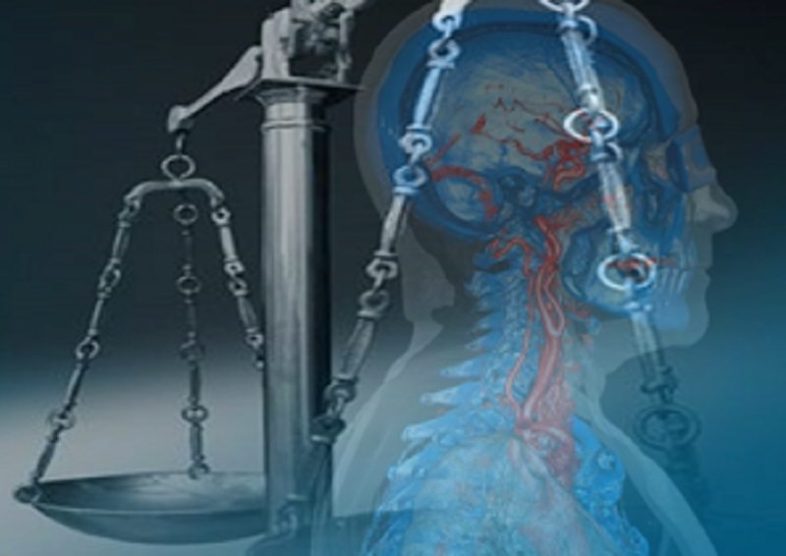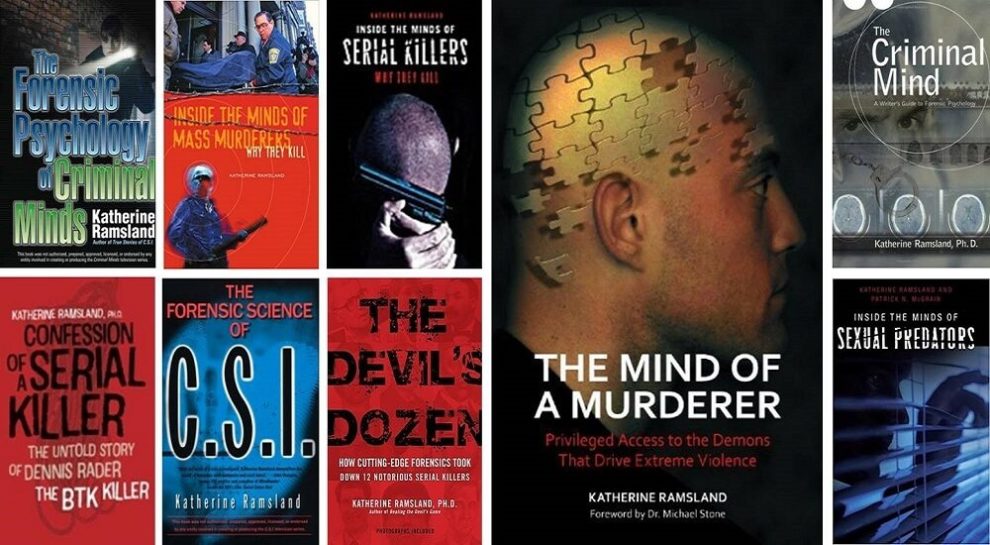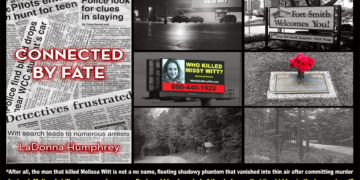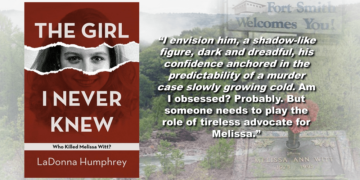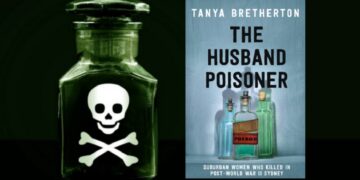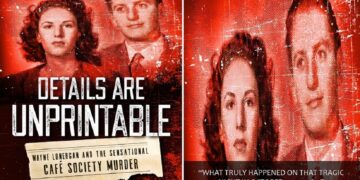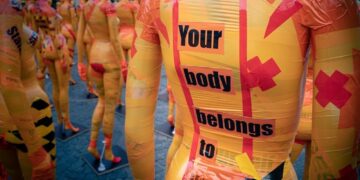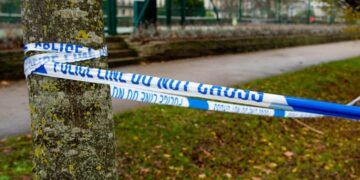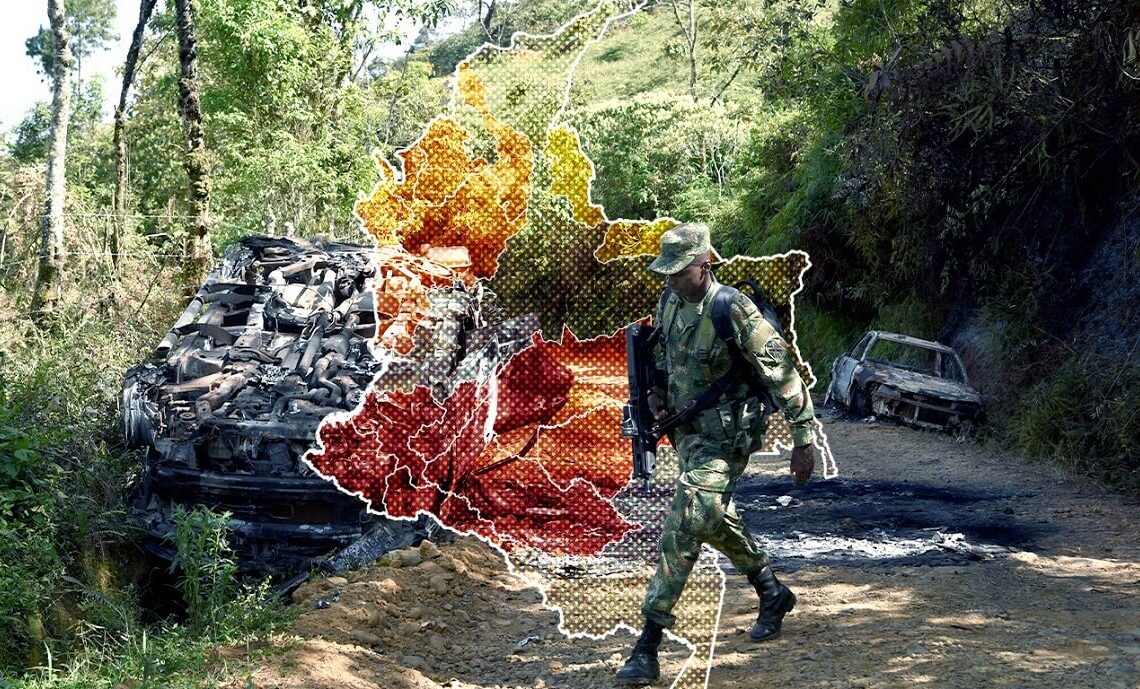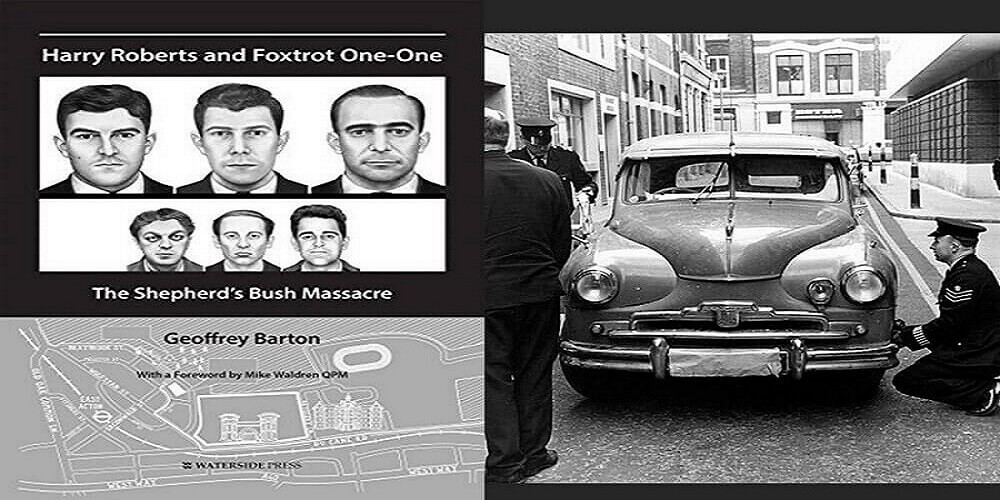This article by the Colombia Investigative Unit is republished from Insight Crime, a part media, part academia and part think tank providing regular reporting, analysis and investigation on the threat to national and citizen security in Latin America and the Caribbean from organized crime. Read the original article here.
The coronavirus pandemic sparked a shift in Colombia as criminal actors nationwide sought to profit from the sudden change in conditions, the refocusing of state priorities and distracted security forces.
Five months into quarantine, the country’s criminal landscape has evolved, although the long-term consequences are difficult to predict.
As across the region, armed groups often imposed their own coronavirus measures, forcing local populations to play by their rules and not those of the government. From pamphlets enforcing lockdowns and curfews, illegal detentions and killings of those who broke the rules, to communities being displaced by violence, the consequences have been wide-ranging.
SEE ALSO: Coverage of Coronavirus and Organized Crime
Human Rights Watch registered such measures imposed in at least 11 Colombian departments, especially in the country’s more rural areas.
But the gangs did not just seek to extend their power by substituting the state. In the country’s most frequent violent hotspots, such as Nariño, Cauca and Norte de Santander, the pandemic saw longstanding criminal disputes play out, with shifts in power and territorial control perhaps happening faster than before.
InSight Crime carried out extensive research across 14 departments to see what forms of criminal governance have taken shape across Colombia, and what this might mean for the future.
Northern Colombia

Unsurprisingly, the departments of Antioquia, Bolívar and Córdoba all saw active operations by criminal groups during the lockdown given the large number of actors operating there.
The Urabeños, elements of the ex-FARC Mafia, the National Liberation Army (Ejército de Liberación Nacional — ELN) and Caparrapos all contest this territory, often through a shifting web of alliances, while the presence of emissaries of Mexican cartels has also been detected.
In Antioquia’s subregion of Urabá — from where the group takes its name — the Urabeños stamped their authority early. From April, they sent WhatsApp messages to residents in the municipalities of Turbo, Apartadó, Carepa and Chigorodó, telling people to respect the lockdown and warning them not to leave their homes without reasonable cause. And according to the United Nation’s Office for the Coordination of Humanitarian Affairs (OCHA), the group also circulated pamphlets in the municipality of Caucasia ordering people to obey the lockdown.
This trend of enforcing the lockdown was also followed by the ex-FARC mafia’s 18th Front Román Ruíz, a group that was once part of the now demobilized Revolutionary Armed Forces of Colombia (Fuerzas Armadas Revolucionarias de Colombia — FARC).
SEE ALSO: How Colombia’s Lockdown Created Ideal Conditions for Child Recruitment
Starting in late March, the 18th Front distributed a signed pamphlet in Ituango and rural parts of the Bajo Cauca region, warning that they would be forced to “act and sanction those who did not follow the established norms.”
But the Urabeños and ex-FARC Mafia were likely moved by more than purely civic intentions. In particular, Ituango is a strategic area for drugs moving between the departments of Antioquia and Córdoba. It is currently a stronghold for the 18th Front, but with the Urabeños seeking to strengthen themselves in the area since early 2020, securing the cooperation of local populations will prove useful if the two groups clash and resisting government incursions.
In southern Córdoba, the Urabeños and Caparrapos have been engaged in a similar struggle. As they did in Antioquia, the Urabeños threatened to kill any who violated their lockdown since April. According to Verdad Abierta, the group summoned community leaders to meetings, demanding that checkpoints be set up and to be warned if any unknown people entered the area.
This would serve to counter the Caparrapos in the area, which the Urabeños have been battling. This group has acted similarly, especially around the town of Montelibano, telling residents by WhatsApp to stay off the streets due to “military objectives.”
And in southern Bolívar, where the ELN has been the main criminal actor since the FARC demobilized, residents received threats in the municipalities of Simití, Cantagallo, San Pablo and Santa Rosa del Sur, along the Rio Magdalena river. Control over these towns and the river is crucial to the ELN’s criminal operations. The area has a large amount of coca crops, is home to the San Lucas mountain range that is rife with illegal mining, and offers access to drug routes connecting Colombia with Panama and Venezuela.
Pacific Coast
The department of Chocó, on the border with Panama and which sees a lot of drug trafficking and human smuggling, is home to a prolonged feud between the ELN and the Urabeños. And both groups have used the pandemic to try and consolidate their control there.
In early April, the ELN distributed pamphlets in the municipalities of Tadó, Litoral de San Juan, San José del Palmar and Atrato that presented a range of regulations linked to the coronavirus emergency. This included the closure of certain roads, curfews, a ban on events and meetings, and required everyone to stay isolated.
On the other hand, the Urabeños appear to have sown particular terror among the Emberá Indigenous communities in the department. Authorities revealed that communities complained about being forced to stay in their homes and being subject to curfews from March onward. Additionally, both groups were linked to the forced recruitment of children in Chocó, including from Emberá communities.
SEE ALSO: Colombia’s High Commissioner for Peace Lays Out New Appeal to Armed Groups
The violent clashes between the two did not stop in March, with the ELN gaining steadily more ground in northern Chocó against the Urabeños. One former government investigator, who spoke to InSight Crime anonymously due to security concerns, stated that while the Urabeños may be losing the war, the communities are afraid of both sides.
In southern Cauca, the ELN and the ex-FARC Mafia’s Carlos Patiño Front have clashed. But this fighting has gone beyond armed conflict and has seen both groups try to assert control over people in key municipalities. This has especially been the case in Argelia and El Tambo, part of one of Colombia’s main cocaine production enclaves, where the two groups have also fought the army, according to a July report by the United Nations Office on Drugs and Crime (UNODC).
Demobilized FARC fighters have been particularly targeted, with gunmen killing several out in the open in Cauca seemingly with impunity during the pandemic.
Threatening pamphlets also circulated in March from the Jaime Martínez Front of the ex-FARC Mafia, which established strict hours for shops and businesses to open in northern Cauca.
In Argelia, the Carlos Patiño Front threatened to kill anyone who did not comply with the enforced quarantine, while the Dagoberto Ramos Front forced shops to comply with their chosen prevention measures and painted menacing graffiti on shops and vehicles in their areas of influence, including around the municipality of Totoró in eastern Cauca.
A source from Cauca’s Indigenous Regional Council (Consejo Regional Indígena) told InSight Crime that, at the height of the pandemic, the department had over 380 checkpoints set up by the ex-FARC Mafia. Some have now been removed since then.
The department of Nariño, on Colombia’s southern border with Ecuador, has come under particular pressure with the presence of the ex-FARC Mafia, ELN and Urabeños, all of which have made separate threats and established restrictions on movement. In some cases, those suffering from COVID-19 have been threatened directly, as was the case when armed groups reportedly forced the family of a 13-year-old patient to leave town in Cumbitara.
Yet most of the violence in the Pacific appears rooted in longstanding territorial disputes. In July and August, the Urabeños and the ex-FARC Mafia’s Carlos Patiño Front battled for control of Leiva and El Rosario in Cauca. In Nariño, over 20 people were killed in the span of a week in late August, reportedly due to escalating tensions between the ELN, former FARC groups and the Urabeños.
Southern Colombia

In the department of Guaviare, the ex-FARC Mafia’s 1st and 7th fronts established very tight controls over populations under their command. According to witness statements gathered by Human Rights Watch and backed up by InSight Crime sources on the ground, people were not allowed out of their houses, checkpoints were set up and communities were pressured to control the entry of unknown people into the area.
According to an army report published by Caracol Radio in August, the 1st and 7th fronts have used the pandemic to bolster their ranks in part by forcibly recruiting minors. The group’s members have even attended community meetings to identify potential targets.
In May in southwest Caquetá department, ex-FARC Mafia groups took control of community lockdowns and asked locals to set up checkpoints, according to La Silla Vacía.
SEE ALSO: Resurgence of Coca in Putumayo Reflects Colombia’s Failed Strategy
A similar situation happened in Putumayo department, where at the end of March, an alliance between La Constru and the 48th Front calling itself “La Mafia” set up illegal checkpoints in the municipalities of Puerto Asís, Orito, Valle del Guamuez and San Miguel. These two groups have maintained impressive cohesion in Putumayo, despite the deaths of key leaders on both sides. These checkpoints are part of their territorial control over fertile coca production grounds.
Putumayo has also seen cases of people reportedly being killed for not following the rules. However, this has essentially provided a convenient excuse for criminal actors to murder opponents. This was the case of Edison León Pérez, a community leader killed in June after he had sent a letter to authorities decrying that residents had been forced to set up checkpoints, interrogate those passing through and test them for COVID-19 symptoms.
Central Colombia
In early May, authorities reported pamphlets surfacing in the municipalities of Algeciras, Rivera and Campoalegre in the department of Huila. The messages were signed by Hermes Suárez, then head of the Oscar Mondragón Front, allied with the Segunda Marquetalia, a group of former FARC rebels lead by one of its most influential former leaders. However, this may have brought unwanted attention to Suárez, who was arrested in July in a targeted army operation.
In the department of Meta, the Ombudsman’s Office issued a June alert warning that armed groups were “taking measures very similar to those decreed by the state” in the municipalities of Mesetas and Uribe. The alert stated that these unidentified groups were seeking to gain legitimacy with the population as “protectors and guarantors of sanitary security” by imposing curfews and controlling movement. Pamphlets found in these municipalities indicated the ex-FARC Mafia’s 40th Front was behind these orders.
And in the municipality of La Macarena, the 7th Front reportedly forced residents to set up a number of checkpoints, according to data from the United Nations Office for the Coordination of Humanitarian Affairs (OCHA).
Venezuelan Border

The region of Catatumbo in Norte de Santander has been hotly contested in recent years. In particular, the ELN and the Popular Liberation Army (Ejército Popular de Liberación — EPL) have been engaged in a bloody struggle for control, with the EPL consistently being pushed back.
The coronavirus lockdown solidified the ELN’s dominance over Catatumbo as it used the opportunity to increase its control and ramp up threats and violence against social leaders. In June, the group was linked to forced recruitment of minors through a “census of children in rural families,” which was used to identify potential targets to join their ranks. The ELN also allegedly organized parties and broadcast them on social media, inviting young people to attend and encouraging them to join.
SEE ALSO: Between Contraband and Coronavirus: Migration Dynamics at the Venezuela-Colombia Border
The ELN also used the lockdown to renew their longstanding feud with the Rastrojos, a criminal gang that controls much of the migrant trafficking and contraband trafficking that takes place along Norte de Santander’s border with Venezuela. In March, InSight Crime reported that the ELN appeared to be working alongside Venezuelan state forces to drive the Rastrojos out. This has only gotten worse. The war has driven up violence in the important border city of Cúcuta and provoked a number of homicides and displacements in Catatumbo over the summer.
And despite being on its heels, the EPL also called on the people of Norte de Santander to comply with coronavirus containment measures and said its troops would “contribute to controlling the population.” The ex-FARC Mafia’s 33rd Front also congratulated communities for resisting the propagation of the virus, despite allegedly being “abandoned by the state.”
Finally, the ELN also appears to have adopted more direct ways of gaining popularity. In the village of Teorama in Norte de Santander, a video showed ELN members distributing goods and informing locals about preventive measures to take against COVID-19. In its research, this was the only example InSight Crime found of a Colombian group distributing aid, as was more commonly seen in Mexico.











